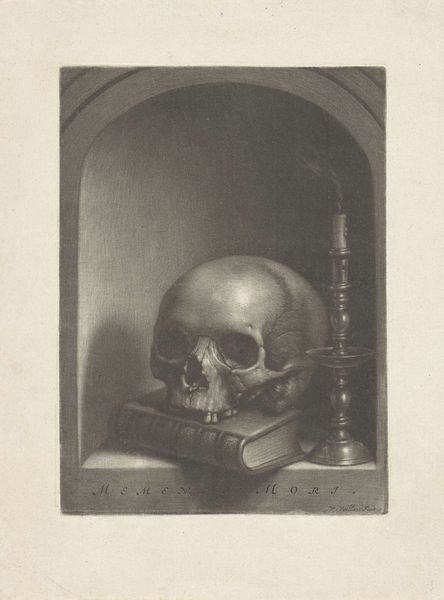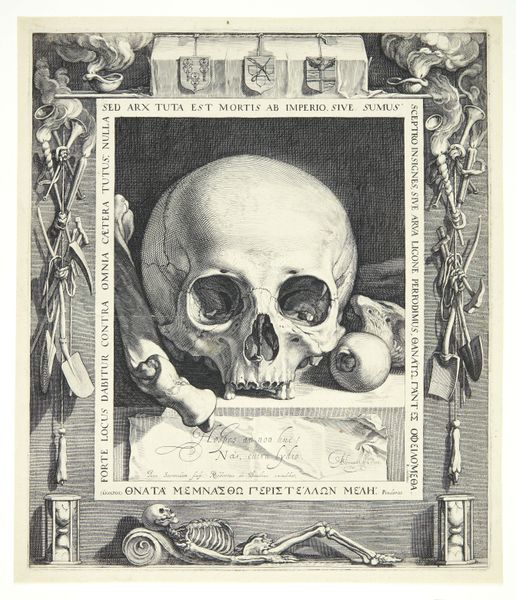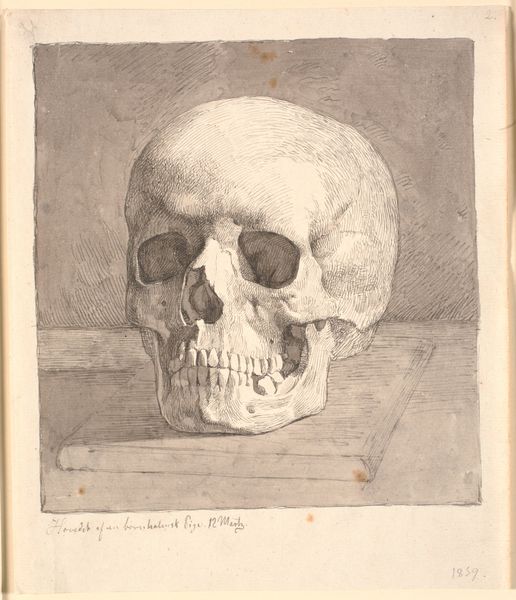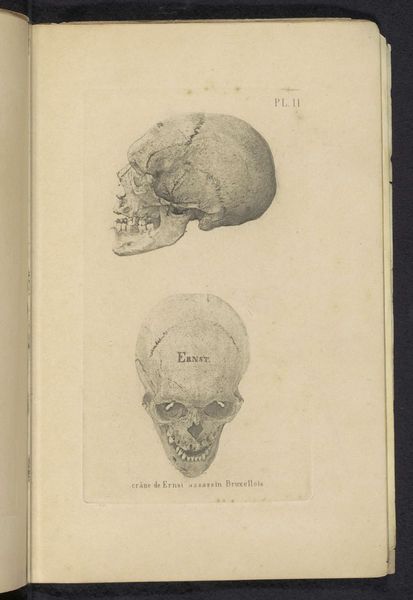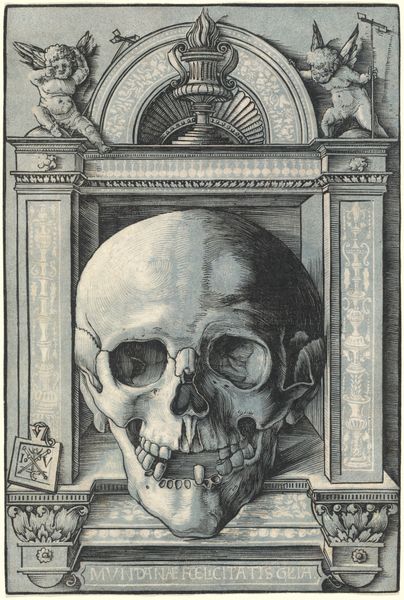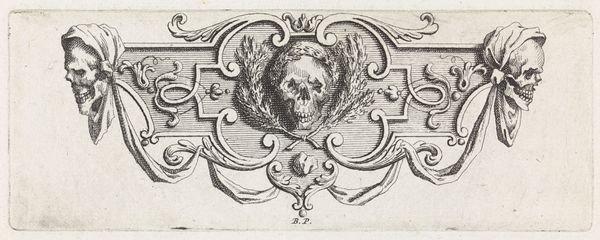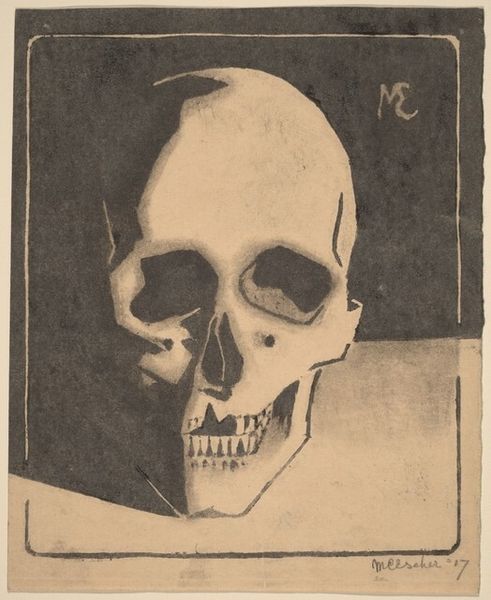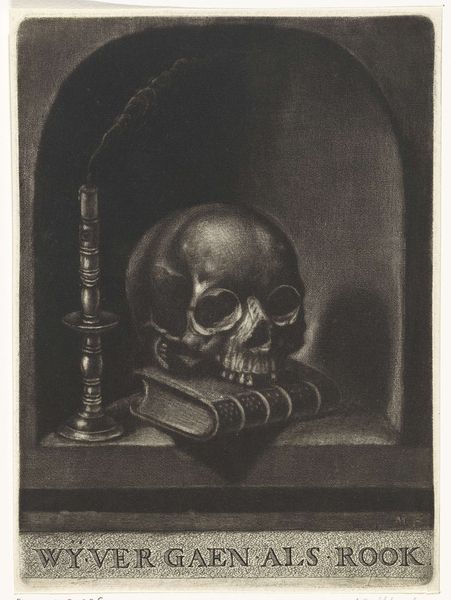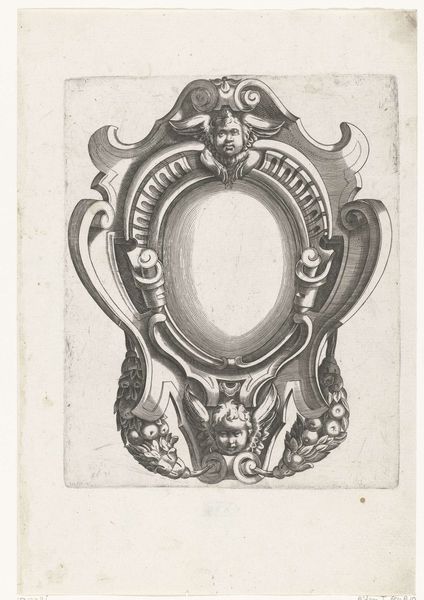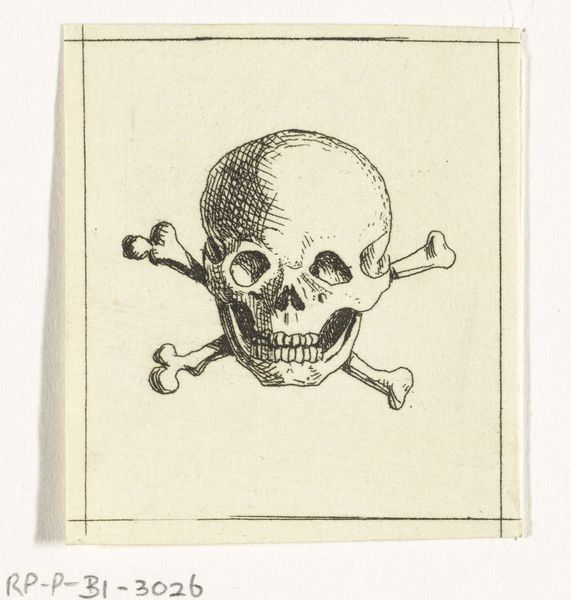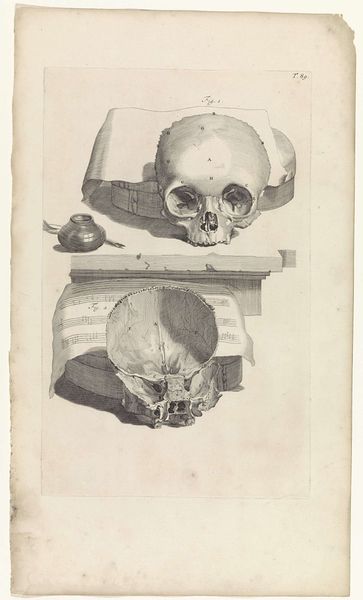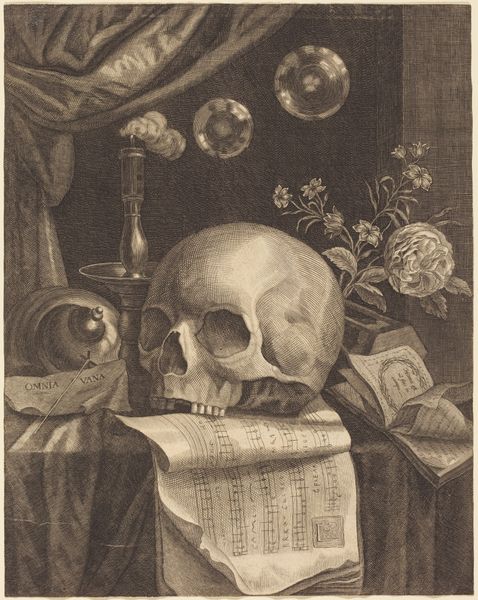
print, engraving
#
baroque
# print
#
old engraving style
#
figuration
#
vanitas
#
engraving
Dimensions: height 159 mm, width 110 mm
Copyright: Rijks Museum: Open Domain
Curator: Allow me to introduce you to “Skeletbuste,” an engraving by Egbert Van Panderen, dating approximately from 1590 to 1637. It's currently housed at the Rijksmuseum. Editor: What immediately strikes me is the dense ornamentation surrounding the skeletal bust—a frame brimming with vanitas symbols. The composition feels both meticulously planned and incredibly morbid. Curator: Indeed. The Baroque style is quite evident in the swirling cartouches, skulls, and hourglasses that encircle the central figure. The artist has rendered the skeletal form with precise detail, creating a complex interplay of line and form within the print medium. Notice the textures and hatching used to create depth. Editor: But beyond the aesthetic construction, I find myself drawn to the act of printing itself. How many impressions were made from the plate, how widely were they circulated, and who had access to this meditation on mortality? The making and distributing of such images—its role as a form of vernacular media, feels highly relevant. Curator: Your point is well-taken. And surely, a Materialist approach illuminates the broader socio-cultural function this image may have served. From a Formalist lens, the symmetry within the piece emphasizes a sense of balance despite the macabre subject matter. It points toward structure. The use of line—almost calligraphic in places—creates a dynamic surface tension. Editor: I’m still captivated by the physicality, of this small engraving, think about the paper it’s printed on, its source. Each decision has layers embedded within social history. I imagine it serving as a memento mori, reminding the viewer of the ephemerality of life. Curator: The artist skillfully used the medium of engraving to engage with philosophical notions and communicate deeper symbolic ideas concerning transience. Editor: Precisely, the work asks, "what endures?" Curator: A potent question rendered masterfully through its form and imagery. Editor: And, when considered through a lens focused on the material world, it reveals not only the work, but something about how those images, and their makers, played a role in reflecting the concerns of their historical period.
Comments
No comments
Be the first to comment and join the conversation on the ultimate creative platform.
